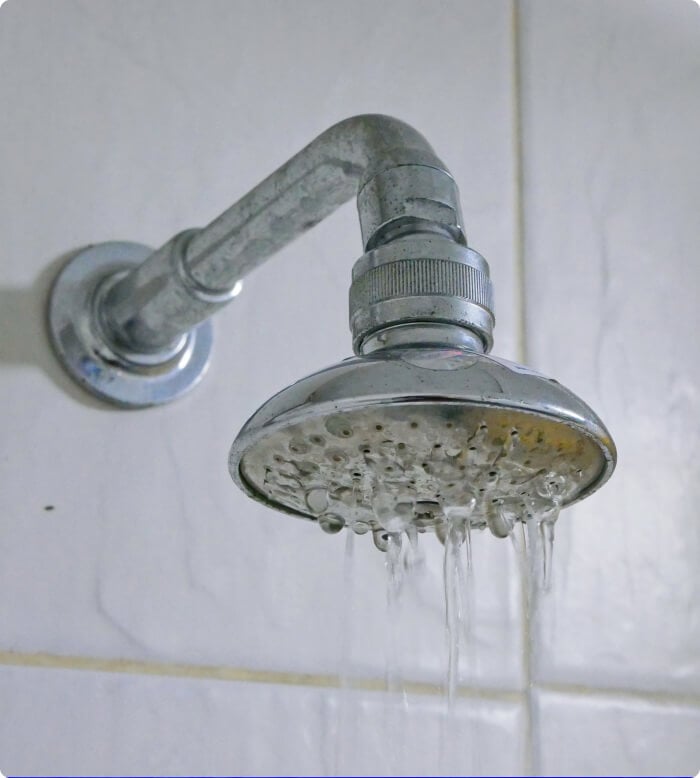Pipe problems can be a drain.
See how a plumbing protection plan can help with covered repairs.
Leaky faucets are a common yet frustrating problem, but the good news is they’re usually easy to fix. The most challenging part is identifying the underlying issue and figuring out which replacement part is needed. If you are interested in taking preventative measures, consider a faucet and valve protection plan.

In this guide, we’ll walk you through how to determine the type of faucet you have, provide step-by-step instructions to fix a dripping faucet based on its style, and explain why it’s important to address the problem at the first sign of trouble.
The high-level process for fixing a faucet is relatively simple: shut off your water, remove the faucet handle, identify and repair the issue, and reattach the handle. However, the details of diagnosing and repairing the issue will depend on the type of faucet you have. A faucet repair kit can also facilitate the process, containing cartridges, o-rings, wrenches, springs, and whatever your faucet type should require.
First, identify the type of faucet you have so that you will be able to troubleshoot and repair it (step 4).
To turn off the water supply, you should be able to find a valve located under your sink. Twist the knob to an “off” position. If you cannot locate this, you can turn off your home’s water supply as you repair.
To remove the handle, see if you can locate the handle screw. It's usually hidden under a decorative cap or button on the top or side of the handle. You can pop this cap off using a flathead screwdriver. In some cases, there might be a second screw or fastener underneath the handle or inside the faucet body.
Each type of faucet generally has a specific part that wears out, like washers, O-rings, or cartridges. You may find these individually at a hardware store or in a repair kit. Replace the worn part and reassemble.
Thinking about coverage?
Security for your home. Protection for your budget.
A worn-out or damaged cartridge is the most common cause for leaks. The cartridge controls the flow of water, and if it’s damaged, it may not create a proper seal, causing water to leak from the spout.
The most common reason for leaking is a worn-out washer or O-ring. These parts create a seal when you turn the handles, and if they’re deteriorated or cracked, water can leak out of the spout.
A worn-out valve seat or damaged valve seals is typically responsible. The valve seals control water flow, and if they degrade, water can leak out of the spout.
The most common cause of leaking is a damaged ball valve or worn-out O-rings around the ball. These seals prevent water from leaking when the faucet is off.
Leaks in ceramic disk faucets are often caused by worn ceramic discs or damaged seals. The ceramic discs control the water flow and can wear down over time, allowing water to leak.
Screw the faucet handle back on and turn on the water. Your sink should be functioning correctly again.
As you can see, leaky faucets are usually caused by simple wear and tear of parts that form seals in the faucet. Most leaks can be fixed by replacing washers, O-rings, cartridges, or other worn-out components. If the faucet is old or if the repairs are extensive, it might be worth considering replacing the faucet entirely.
If you need help with replacing a part or replacing the entire faucet, join AHS and video chat with live, repair Experts to help assess or fix home hassles – free with select plans.
Leaky faucets are more than an annoying dripping noise. They can lower the faucet’s water pressure, increase your water bills, and be a magnet for pests like roaches and rodents. If water pools, it can also be a recipe for mold and create potential health risks.
Regular repair and maintenance in your home is crucial for comfort, value preservation, and safety, but sometimes, those repairs can be costly and inconvenient. Consider an American Home Shield plan, which covers up to 29 parts of home systems and appliances, alongside other member benefits, so you can rest easy knowing that unexpected issues are covered.
See how a plumbing protection plan can help with covered repairs.

AHS assumes no responsibility, and specifically disclaims all liability, for your use of any and all information contained herein.
Have a plan for your home when things don't go according to plan
Shop Home Warranties